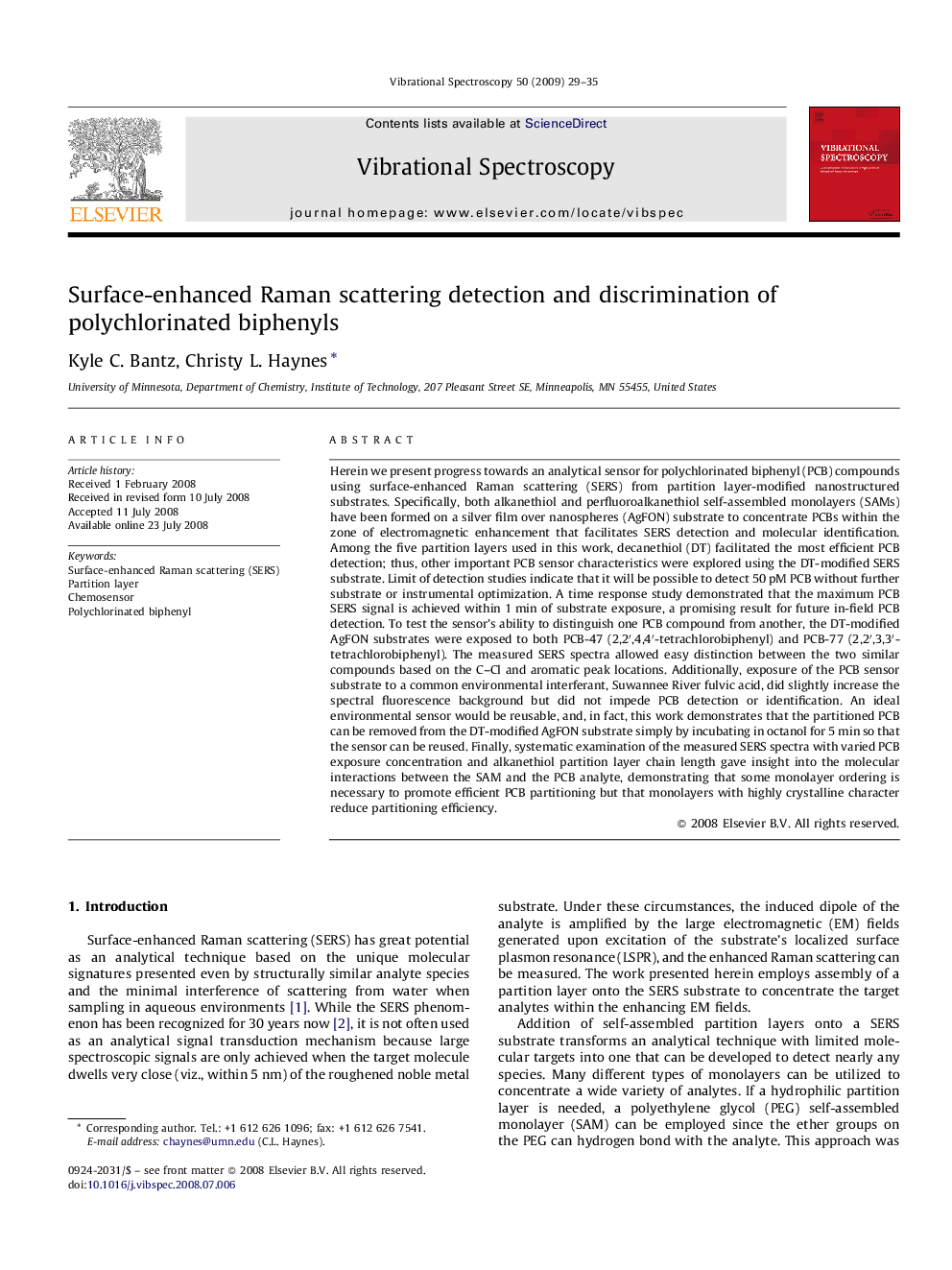| Article ID | Journal | Published Year | Pages | File Type |
|---|---|---|---|---|
| 1250773 | Vibrational Spectroscopy | 2009 | 7 Pages |
Herein we present progress towards an analytical sensor for polychlorinated biphenyl (PCB) compounds using surface-enhanced Raman scattering (SERS) from partition layer-modified nanostructured substrates. Specifically, both alkanethiol and perfluoroalkanethiol self-assembled monolayers (SAMs) have been formed on a silver film over nanospheres (AgFON) substrate to concentrate PCBs within the zone of electromagnetic enhancement that facilitates SERS detection and molecular identification. Among the five partition layers used in this work, decanethiol (DT) facilitated the most efficient PCB detection; thus, other important PCB sensor characteristics were explored using the DT-modified SERS substrate. Limit of detection studies indicate that it will be possible to detect 50 pM PCB without further substrate or instrumental optimization. A time response study demonstrated that the maximum PCB SERS signal is achieved within 1 min of substrate exposure, a promising result for future in-field PCB detection. To test the sensor's ability to distinguish one PCB compound from another, the DT-modified AgFON substrates were exposed to both PCB-47 (2,2′,4,4′-tetrachlorobiphenyl) and PCB-77 (2,2′,3,3′-tetrachlorobiphenyl). The measured SERS spectra allowed easy distinction between the two similar compounds based on the C–Cl and aromatic peak locations. Additionally, exposure of the PCB sensor substrate to a common environmental interferant, Suwannee River fulvic acid, did slightly increase the spectral fluorescence background but did not impede PCB detection or identification. An ideal environmental sensor would be reusable, and, in fact, this work demonstrates that the partitioned PCB can be removed from the DT-modified AgFON substrate simply by incubating in octanol for 5 min so that the sensor can be reused. Finally, systematic examination of the measured SERS spectra with varied PCB exposure concentration and alkanethiol partition layer chain length gave insight into the molecular interactions between the SAM and the PCB analyte, demonstrating that some monolayer ordering is necessary to promote efficient PCB partitioning but that monolayers with highly crystalline character reduce partitioning efficiency.
